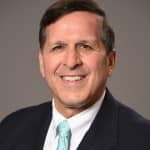Seven key factors of orthodontic practices that consistently demonstrate higher production relative to that of another similar practice.
By Roger P. Levin, DDS
In almost 40 years of providing consulting services to orthodontic practices in all parts of the country, Levin Group has observed a phenomenon repeatedly that provides a critical lesson for every orthodontist practicing today. The presence of documented, proven, step-by-step systems has a direct correlation to the success of the practice in terms of production, team retention, and owner satisfaction. We often see practices with finely tuned business systems and an orthodontic team that is fully trained to use them that are twice as productive as other practices in similar communities and with similar patient bases and who have no systems or highly dysfunctional systems.
Understanding the comparison
In many towns, cities, and suburbs across the country, there will be two orthodontic practices that we have had the opportunity to review that have very similar characteristics (ie, geographic location, patient demographics, staffing levels (team size), number of treatment chairs, and hours of operation.) We’ve made these observations over the years simply to try and understand how both practices could have generally the same set of characteristics and yet one established significantly higher production versus the other. In these unique situations we were able to eliminate the variables represented by the characteristics that both practices shared and could then better understand what the major contributing factors are regarding orthodontic practice success.
So, what does contribute to the success of an orthodontic practice that was double the production of another practice with similar characteristics?
Key factors in orthodontic practice success
Here are some of the key factors we observed regarding a practice that consistently demonstrated significantly higher production relative to that of another similar practice.
- Goal Oriented Orthodontist. The higher performing practice typically had well-thought-out, written goals for each year. It was interesting to note that the orthodontist, sometimes with the team and sometimes independently, took the time to determine what the annual goals were in several areas including referrals, production, overhead, profit, hiring, continuing education, new technology, and practice improvements. While there were many other categories in which the goals were established, one notable factor was that the higher performing practices entered each year with a written set of goals that were then shared with the team and became the practice performance plan for that particular year. They took their goals very seriously.
- Staff Longevity. Higher performing practices had higher team longevity. Turnover was low in higher performing practices and often associated with retirement due to age or relocation of a family member. This would indicate that the team was more satisfied in their positions in the higher performing practices either due to financial compensation, practice culture, or other key factors.
- Documented Systems. Higher performing practices typically had documented systems in place for most tasks and functions in the practice. And these systems included scripting wherever appropriate. They took the time to document how each task was to be performed and often included key scripting on how to communicate with patients. As an example, one practice had extremely specific rules such as contacting any orthodontic patient when they were 1 day overdue for an appointment to keep the debonds on track.
- Office Manager. Higher performing practices typically had a highly trained office manager. This was an important factor in that they were able to continue growing by adding management expertise to improve the flow, function, and daily performance of the practice. Gradually, these office managers trained all team members at a high-level and spent extraordinarily little time managing or micromanaging the team. The office managers that we met displayed strong confidence and leadership skills and understood it was their job to ensure the continuing growth of the practice. As noted above, they also had an annual set of goals that were to be achieved.
- Referrals. Practice referrals tended to increase annually in the higher performing practice. It would be easy to simply assume that increased referrals explained why one practice would enjoy double the production of another practice despite their similarities. However, we also make a strong assumption that the steady stream of referrals was due to both an excellent referral marketing program and a fun and enjoyable environment that added to the practice’s positive reputation.
- Referral Marketing. Higher performing practices had a strong and consistent referral marketing program that typically included patients, parents, and, usually, referring doctors. A few had strong social media programs that were effective, and they also tended to have name recognition from community sponsored activities. It was interesting that in one case, the orthodontic practice with double the production had its name everywhere including on the scoreboard of local schools. Conversely, the comparison practice had no community name recognition.
- Five-Star Customer Service. Orthodontic cases are a significant cost for most patients or families. And when there is a higher fee level, a higher level of customer service is expected. In fact, in most cases, you are judged by two criteria: First, by the perceived quality of the smile at the end of treatment, and, second, by the level of customer service. In fact, many patients perceive customer service as a clinical quality factor without even realizing it. We repeatedly found that the practices that experienced higher production had excellent customer service. This is not to say that practices with half the production of the comparative practices were unpleasant, but that their customer service was not at the same overall level as the practice that had built a strong brand in the community, developed highly satisfied patients, and continued to attract strong referrals. The opposite of excellent is not always horrific. It can simply just not be good enough.
It has been truly fascinating to observe two practices with remarkably similar characteristics and profiles where one practice significantly higher in production versus the comparative practice. This has created an opportunity to understand some of the inherent attitudes and behaviors of high-performing orthodontic practices and argues against simply identifying opportunities or factors such as location, size, number of years in practice, or insurance participation. All these factors are important and certainly play a role in orthodontic practice success, but not as significantly as setting clear annual goals, documenting and updating systems regularly, creating higher team longevity, and adhering to the above referenced associated factors. Despite all the advances in technology and business recommendations, these basic business principles in the field of orthodontics may still be the most powerful factors in determining which practices are more successful than others and which have double the production. OP

Roger P. Levin, DDS, is the CEO and founder of Levin Group, a leading practice management consulting firm that has worked with over 30,000 practices to increase production. A recognized expert on orthodontic practice management and marketing, he has written 67 books and over 4,000 articles and regularly presents seminars in the United States and around the world. To contact Levin or to join the 40,000 dental professionals who receive his Practice Production Tip of the Day, visit levingroup.com or email [email protected].









